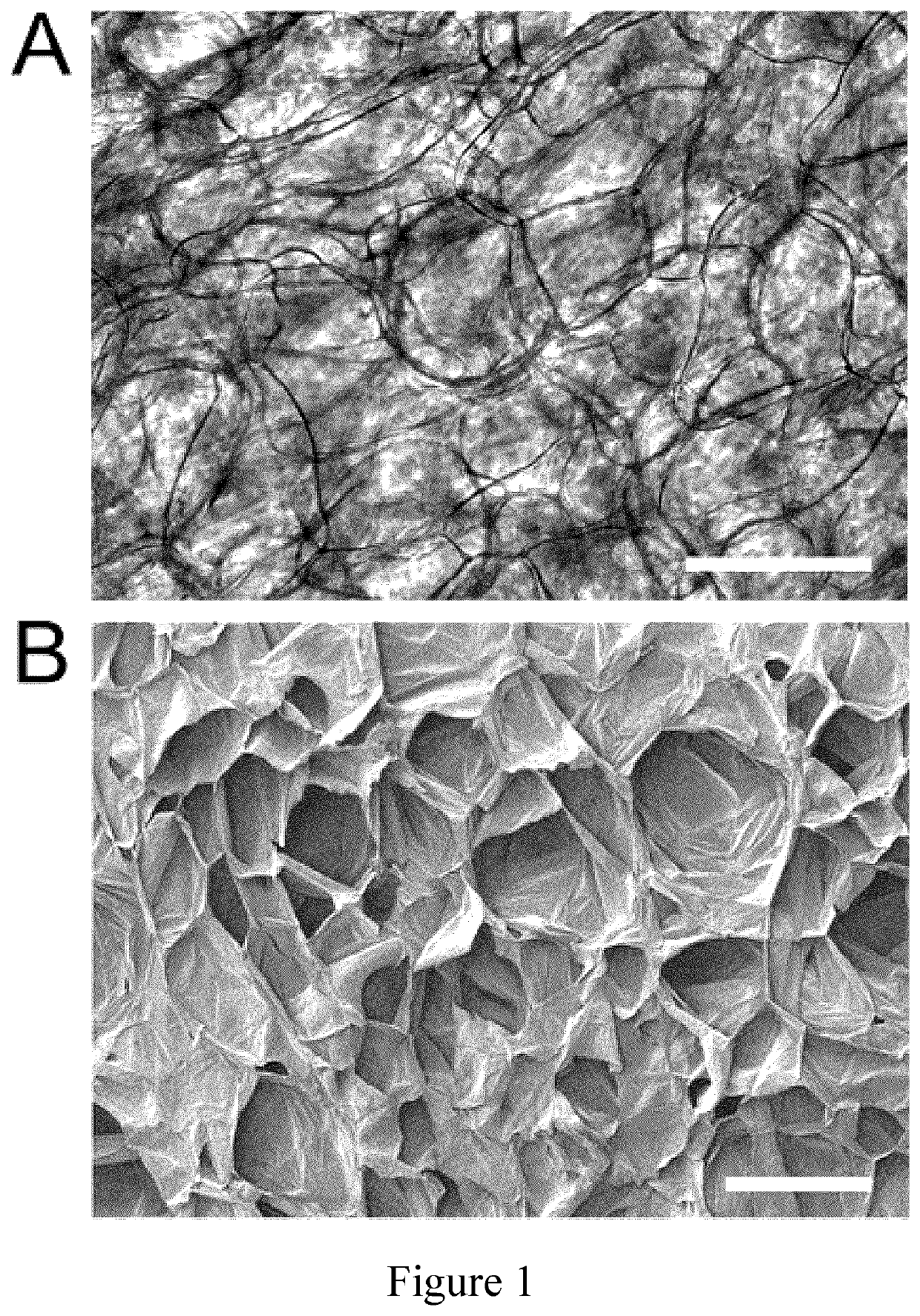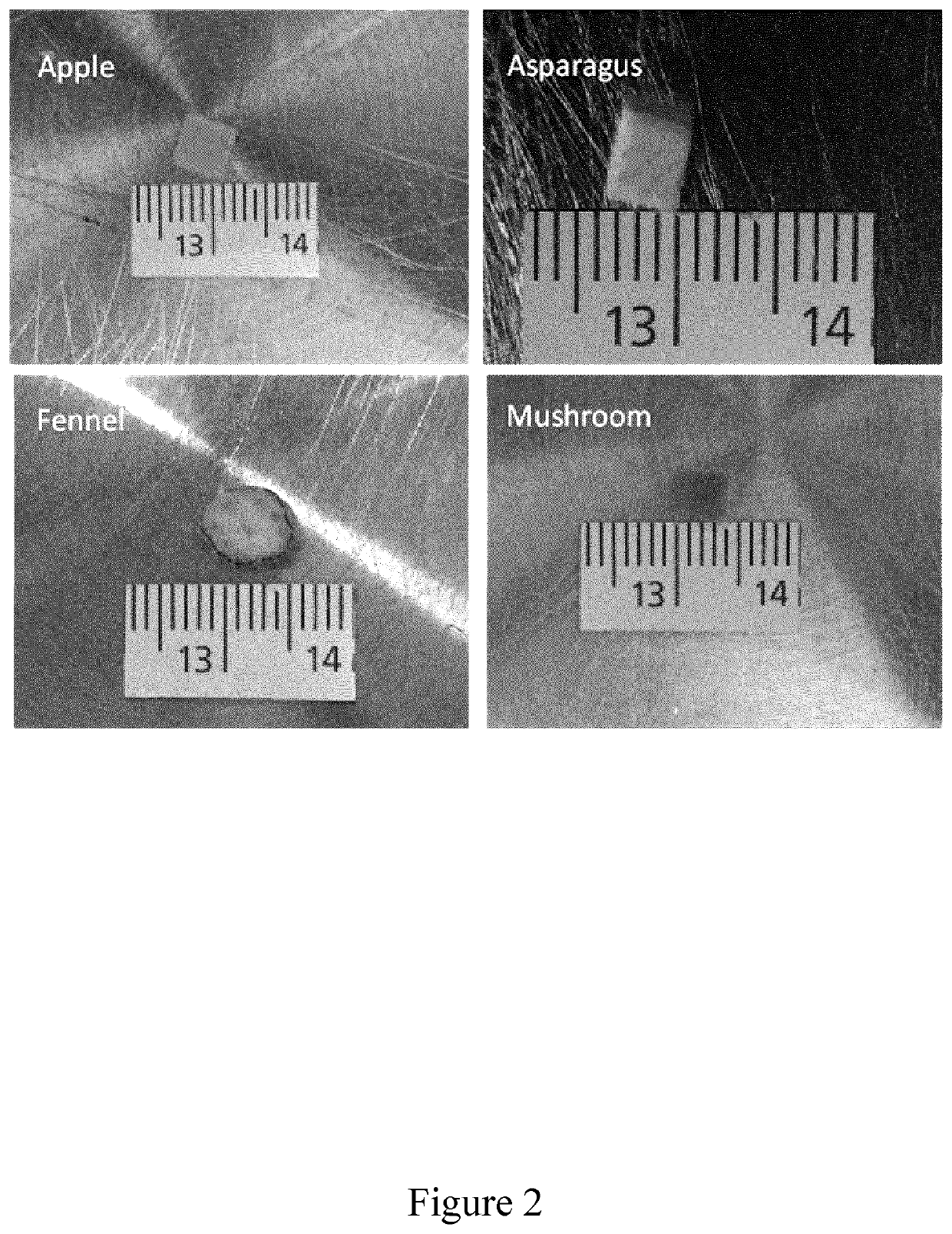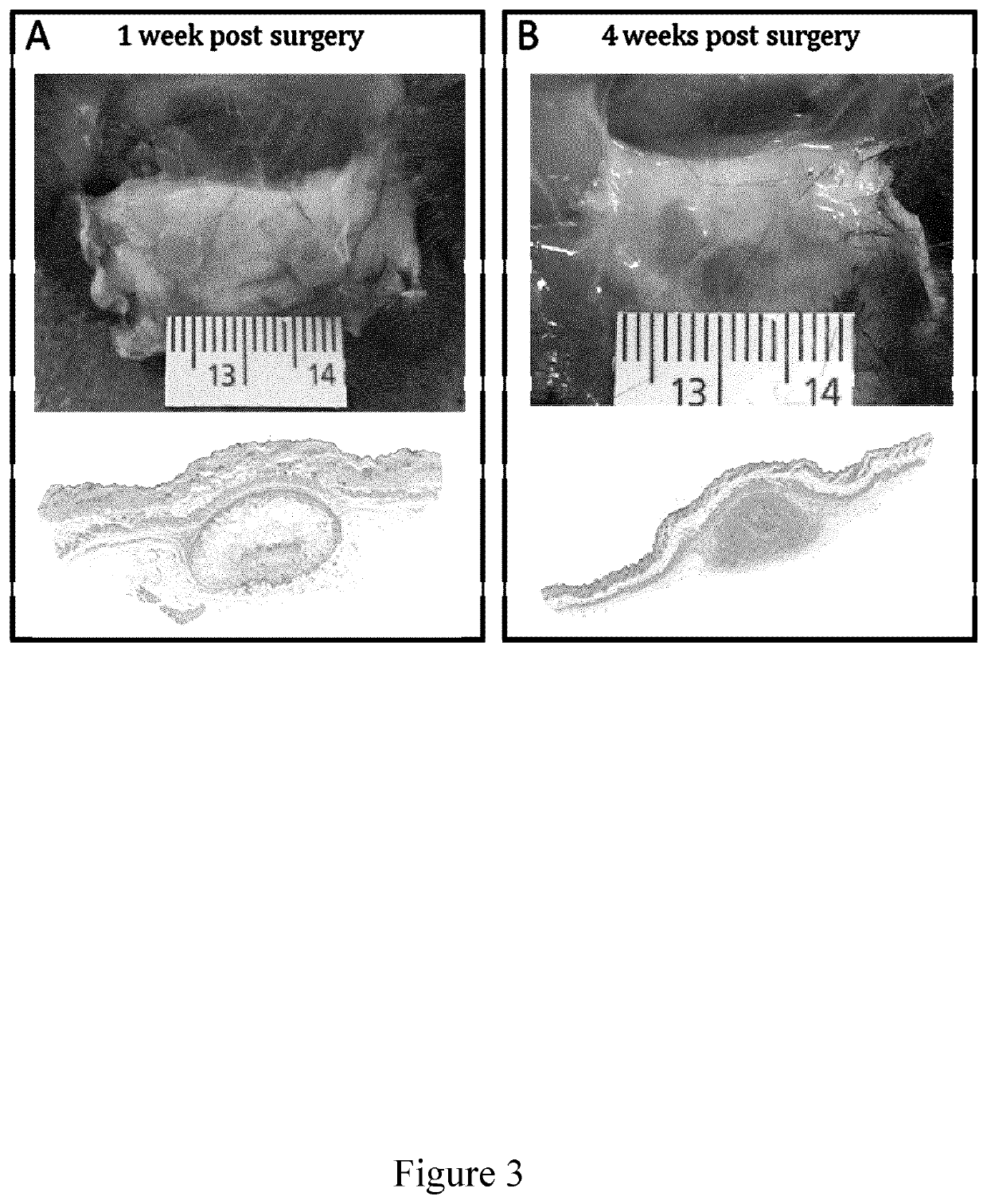Decellularised cell wall structures from plants and fungus and use thereof as scaffold materials
a cell wall structure and plant or fungus technology, applied in the field of scaffold materials, can solve the problems of affecting the quality of the finished product, the risk of disease transmission, and the inability to maintain shape, so as to achieve the effect of reducing the cost of production, reducing the risk of disease transmission, and reducing the cost of end users
- Summary
- Abstract
- Description
- Claims
- Application Information
AI Technical Summary
Benefits of technology
Problems solved by technology
Method used
Image
Examples
example 1
Experimental Protocol Examples for Scaffold Biomaterial Production
[0177]In this Example, two experimental protocols are described for preparing scaffold biomaterials as described herein from an apple hypanthium tissue (Malus pumila). It will be understood that these protocols are provided as illustrative and non-limiting examples intended for the person of skill in the art. The skilled person having regard to the teachings herein will be aware of various modifications, additions, substitutions, and / or other changes which may be made to these exemplary protocols.
[0178]The initial experimental protocol described below was successfully used for preparing scaffold biomaterials. This protocol, however, took many weeks to provide full cell infiltration under the conditions tested. A modified protocol was, therefore, subsequently developed, which includes the use of a calcium chloride wash (CaCl2), which gave similar results to scaffold biomaterials prepared by the first protocol, but with...
example 2
Mouse Implantation
[0241]In vivo mouse implantation studies were performed to study in vivo effects of scaffold biomaterial embodiments as described herein.
[0242]Results indicate that, following subcutaneous implantation in a mouse model, full cell infiltration was observed (See FIG. 7; 1, 4 and 8 weeks after implantation), with collagen deposition (FIG. 4A) and, importantly, angiogenesis with functional blood vessel formation within 4 weeks post-implantation (FIGS. 4B and 8). When scaffolds were implanted in vivo, the minimum footprint promoted cell infiltration, angiogenesis and tissue repair and only a minimal inflammatory response (mainly produced by the surgery itself rather than the scaffold). Plant / fungus derived scaffolds were fully biocompatible in vivo in these studies. These scaffolds were also fully compatible with in vitro studies as shown in (FIG. 5).
[0243]A Non-Biodegradable Biomaterial:
[0244]The field has been primarily focused on biodegradable materials; however, the...
example 3
In Vivo Biocompatibility of Scaffold Biomaterials
[0251]To address the question of in vivo biocompatibility of the scaffold biomaterials, the response of the body to apple-derived cellulose scaffolds has been characterized. Macroscopic (˜25 mm3) cell-free cellulose biomaterials were produced and subcutaneously implanted in a mouse model for 1, 4 and 8 weeks. Here, the immunological response of immunocompetent mice, deposition of extracellular matrix on the scaffolds and evidence of angiogenesis (vascularization) in the implanted cellulose biomaterials was assessed. Notably, although a foreign body response was observed immediately post-implantation, as expected for a surgical procedure, only a low immunological response was observed with no fatalities or noticeable infections whatsoever in all animal groups by the completion of the study. Surrounding cells were also found to invade the scaffold, mainly activated fibroblasts, and deposit a new extracellular matrix. As well, the scaffo...
PUM
 Login to View More
Login to View More Abstract
Description
Claims
Application Information
 Login to View More
Login to View More - R&D
- Intellectual Property
- Life Sciences
- Materials
- Tech Scout
- Unparalleled Data Quality
- Higher Quality Content
- 60% Fewer Hallucinations
Browse by: Latest US Patents, China's latest patents, Technical Efficacy Thesaurus, Application Domain, Technology Topic, Popular Technical Reports.
© 2025 PatSnap. All rights reserved.Legal|Privacy policy|Modern Slavery Act Transparency Statement|Sitemap|About US| Contact US: help@patsnap.com



